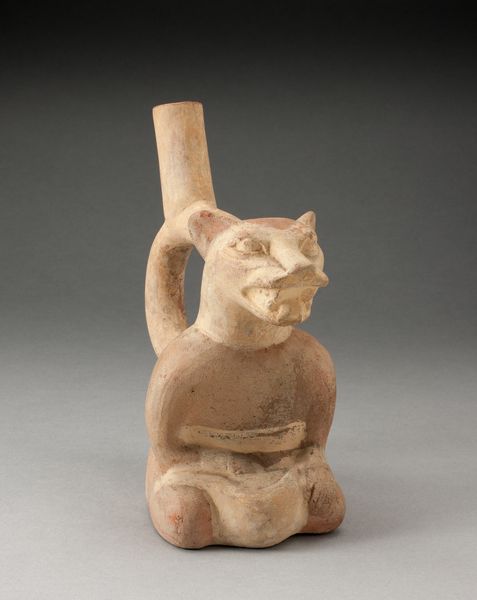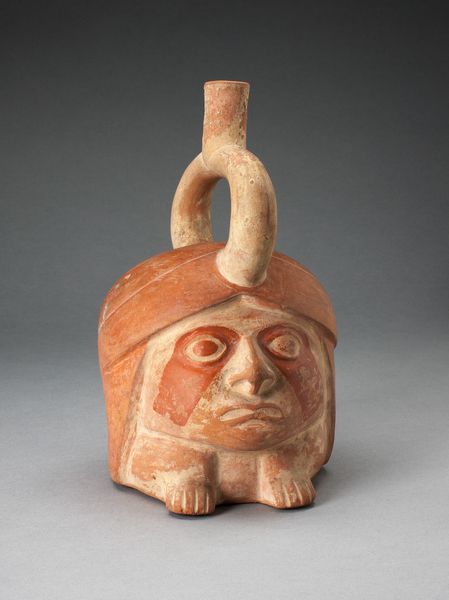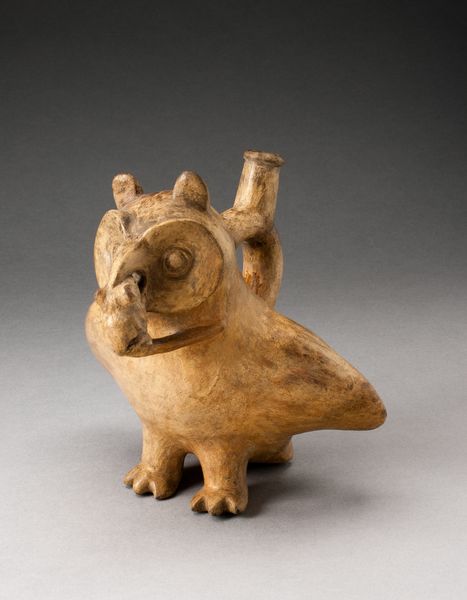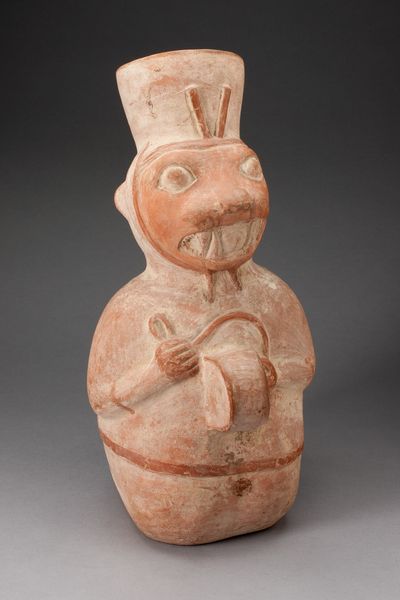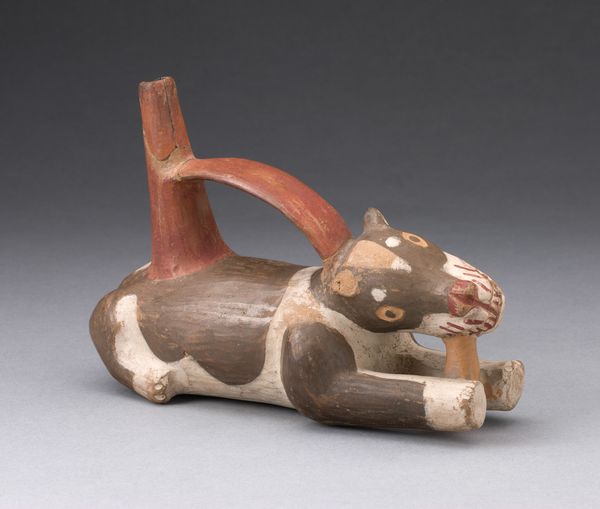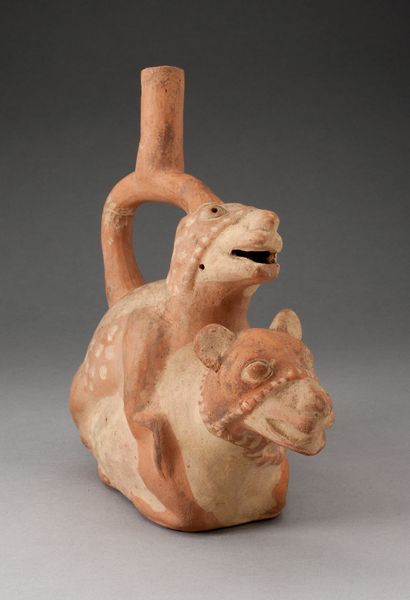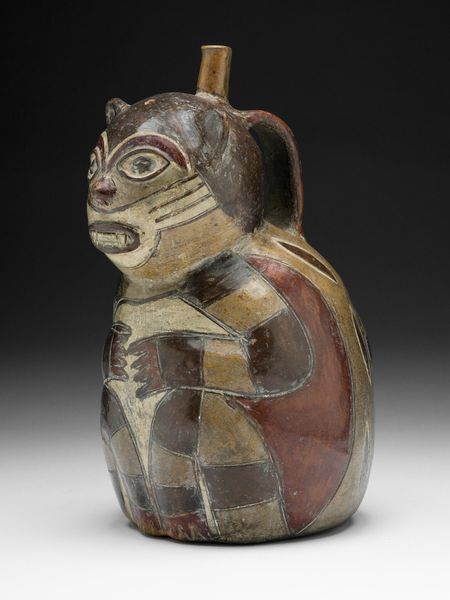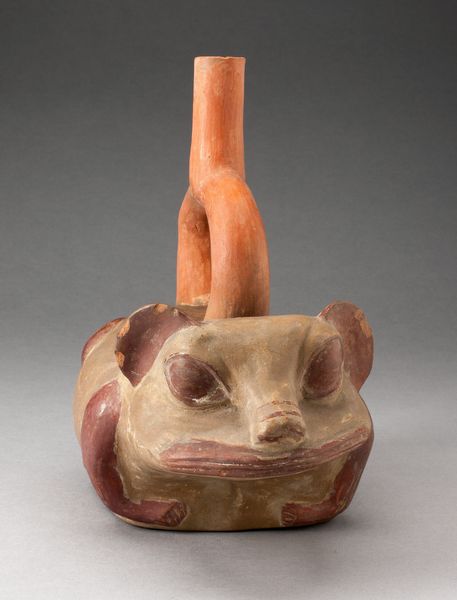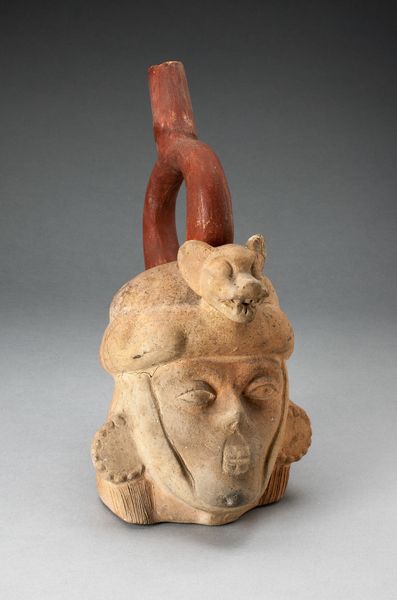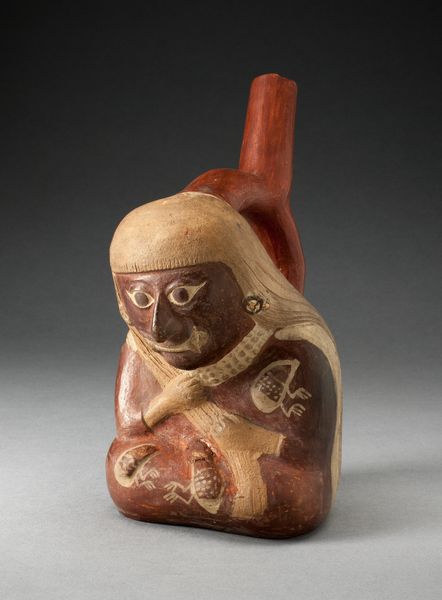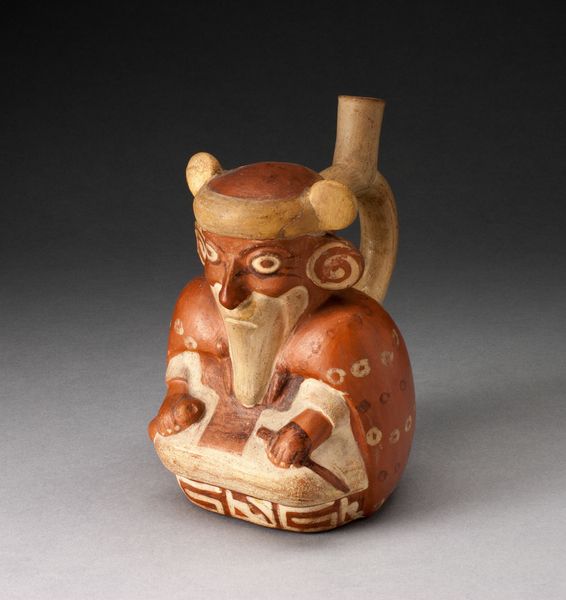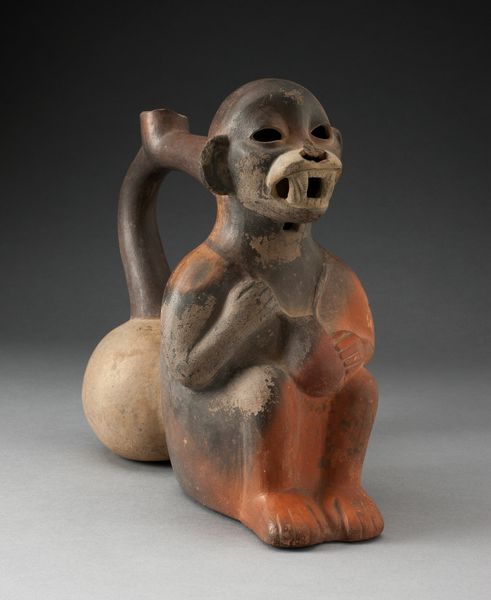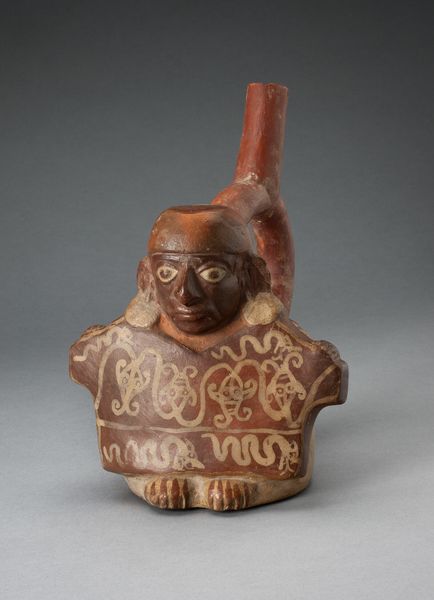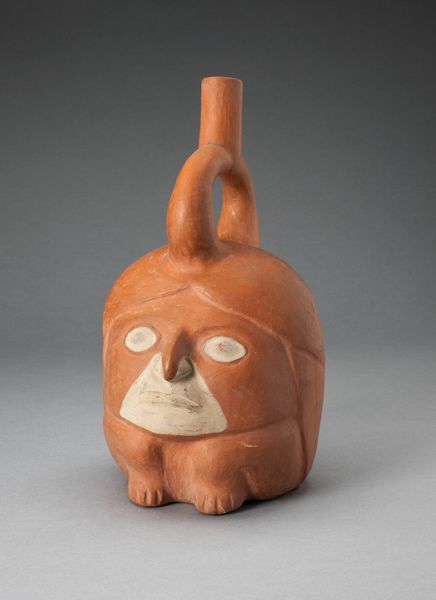
ceramic, sculpture, terracotta
#
ceramic
#
figuration
#
sculpture
#
terracotta
#
indigenous-americas
Dimensions: H. 23.3 cm (9 3/16 in.)
Copyright: Public Domain
Curator: I'd like to introduce you to a ceramic vessel in the form of a feline, dating from around 100 to 500 CE, created by the Moche culture. It’s currently held at the Art Institute of Chicago. Editor: My immediate reaction is that this ceramic cat exudes a quiet, watchful energy. The earthy tones and smooth surface are also very appealing. Curator: The choice of the feline form itself is interesting. In Moche iconography, felines, particularly jaguars, often symbolized power, agility, and supernatural abilities. What significance do you think this object might have had, considering its clear functionality as a vessel? Editor: That's fascinating. Focusing on its materiality, the ceramic hints at both accessibility and ritual importance. The making would likely have involved readily available clay, but also skilled hands and perhaps communal effort. How were such vessels used, socially, ritually? Was there an everyday aspect alongside its symbolism? Curator: It's likely a combination of both, serving both functional and symbolic roles. Its presence and the feline depiction perhaps intended to invoke protection or enhance the prestige of its owner, especially if employed during important events. Look at the way the spout seamlessly emerges from the cat's back—very cunning. What associations spring to mind? Editor: I find myself focusing on the production itself. How was it fired? Was the surface treated with any other material than paint? The simplicity feels almost modern. I'm intrigued by the potential labor, the hands shaping this, the local knowledge intertwined with this clay and firing process. I wonder if the colours come from natural dyes found in the local environment too? Curator: Yes, indeed! Those pigments likely originate from minerals abundant in their surroundings, anchoring the piece firmly within its geographical and cultural context. What strikes me most is its ability to bridge the tangible and the symbolic, using familiar forms to engage with the Moche's worldview. Editor: And to see how materials at hand, common labor, combined to generate a figure imbued with meaning—to me, that underlines art's power to emerge directly from everyday life. Curator: Absolutely. It also reminds us how persistent cultural memories become through material objects that bridge historical context, craft practice and a society's core values.
Comments
No comments
Be the first to comment and join the conversation on the ultimate creative platform.
